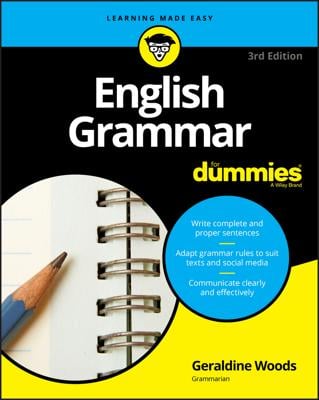Some e-mails are written to friends and family, and as long as you are clear, following grammar rules is not important. But business e-mails, or e-mails to superiors can be treated much like formal letters and following the grammar rules makes you look good. The e-mail is made up of the following parts:
The heading in an e-mail
Atop every e-mail is a little box with a heading, which includes a From, To, and Subject line. You don’t have to worry about the grammar of the To and From boxes. The subject line is the title of your e-mail. Most people follow standard capitalization rules for the subject line.
The e-mail greeting
The message often begins with a greeting (in English-teacher terminology, a salutation). These are all acceptable greetings, complete with punctuation:
Dear Ms. Snodgrass, or Dear Ms. Snodgrass: (The one with the comma is less formal. Begin the message on the following line.)
To Whom It May Concern: (This one always has a colon and is ultra-formal. Begin the message on the following line.)
Hi, Lola. or Hi, Ms. Snodgrass. (Use these forms for friends and acquaintances. Begin the message right after the period, not on the next line.)
Hi, Lola! (This one is for friends only. Begin the message right after the exclamation point.)
Lola, (Informal messages need nothing more than the name. The message begins on the following line.)
Ms. Snodgrass, (This greeting can be a bit stern, as if you couldn’t be bothered with the Dear.) Start the message one line below this greeting.
Hi, Everyone. or Hi, Everyone! (Use these when you write to a group of friends or colleagues. Begin the message on the same line.)
Some writers drop the greeting altogether. No problem, unless you happen to be writing to traditionalists, who prefer the time-honored formats, or egotists, who love seeing their names in print.
The body of an e-mail
The body contains what you want to communicate whether they are words, links to Web sites, images, whatever. If you’re a traditionalist, your e-mails probably mimic paper, mailed-in-envelopes letters.
Some e-mail programs automatically delete spaces between paragraphs when they zap the message to wherever it’s going. Plus, different operating systems don’t always play nicely together. A quotation mark may show up as a strange symbol (@ or a box, perhaps), and margins may wander in and out. Sigh.
If you really care about how the document looks, you can attach the message as a text file. That last maneuver isn’t perfect because not every bit of formatting comes through properly. But most of your document will look the way you want it to. The only surefire method to preserve every bit of formatting is to send your message as a Portable Document Format (.pdf) file, which is a picture of your document.
An e-mail's closing
If you haven’t bothered with a greeting, don’t worry about a closing either, unless you want to sign your name at the end of the message. If you like a big send-off, try one of these:
Best, (short for "best regards" and good for formal and informal e-mails)
Sincerely, (formal)
See you soon, (informal)
Hope to hear from you, (somewhere between formal and informal)
Regards, (formal and a little old-fashioned)
All of the preceding closings contain commas. You can also close your message simply by typing your name (Lola or Ms. Snodgrass) or with your initials (LS for "Lola Snodgrass"), in which case no commas are needed.

